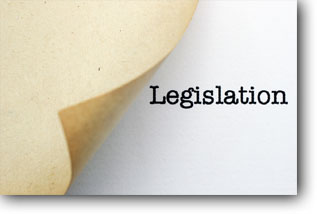Legislation Relevant to Biological Agents
The Biological Agents Regulations

- The Safety, Health and Welfare at Work (Biological Agents) Regulations 2013 and 2020 ( S.I. No. 572 of 2013 as amended by S.I. No. 539 of 2020) set down the minimum requirements for the protection of workers from the health risks associated with biological agents in the workplace.
The Regulations transpose the European directives 2000/54/EC, (EU) 2019/1833 and (EU) 2020/739. They define biological agents and apply to activities in which workers are or potentially are exposed to biological agents as a result of their work. These regulations also apply to cell cultures and to Genetically Modified Micro-organisms (GMM's). The Regulations are supported by a Code of Practice which contains a non-exhaustive list of biological agents, their risk group classification, minimum containment measures and dispensations from minimum containment measures, where appropriate.
Note: GMM's are also regulated by legislation enforced by the Environmental Protection Agency.
Employers must identify the biological agent to which workers are, or may be, exposed. They must assess the risk, making use of the list of biological agents, their classification, containment levels and measures provided for in the relevant Code of Practice, and proceed in accordance with the remaining Regulations where appropriate.
These Regulations permit the Health and Safety Authority to prohibit a specific use of a Biological Agent or request that additional control measures are put in place (Regulation 4).
Other Relevant Legislation
- The Safety, Health and Welfare at Work (General Application) Regulations 2007 to 2023 (S.I. No. 299 of 2007 as amended). Some biological agents have the potential to affect certain sensitive risk groups and there is a specific legal obligation under Part 6 of the Safety, Health and Welfare at Work (General Application) Regulations, 2007, (S.I. No. 299 of 2007 as amended) for employers to assess the exposure of children and young persons and pregnant, post natal and breast feeding employees to biological agents. For example, certain biological agents such as toxoplasma and rubella virus can cause foetal harm and as a result the employer must assess exposure of pregnant employees to these viruses.
- The Safety, Health and Welfare at Work Act 2005 (No. 10 of 2005). Under this legislation there are specific requirements in relation to substances. A substance is defined under the Act as including any natural or artificial substance, preparation or agent in solid or liquid form or in the form of a gas or vapour or as a micro-organism (i.e. a biological agent).
- The European Union (Prevention of Sharps Injuries in the Healthcare Sector) Regulations 2014 (S.I. No. 135 of 2014). These Regulations apply to all employers and employees in the healthcare sector. They require the employer to carry out a sharps risk assessment and implement specific control measures to protect employees at risk. Employers whose main activity is not the provision of healthcare but whose employees may work with sharps will not fall within the scope of the Regulations (unless they are working on the premises of a healthcare employer who is subject to the Regulations) but will still fall under the scope of the Biological Agents Regulations.
- The European Communities (Carriage of Dangerous Goods by Road and Use of Transportable Pressure Equipment) Regulations 2011 as amended (S.I. No. 349 of 2011 as amended). The transport of healthcare risk waste and infectious substances is covered by these Regulations.


